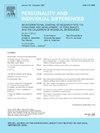Cooperation, different faces of morality, and their links to risk, fear, and personality during a crisis
IF 2.6
2区 心理学
Q1 PSYCHOLOGY, SOCIAL
引用次数: 0
Abstract
Background
Morality-as-Cooperation theory posits that moral behaviour evolved to facilitate group cohesion and collective action. The COVID-19 pandemic, particularly the imposition and subsequent easing of strict regulations in Australia, presented a real-world test of this, where individual decisions had a significant impact on the collective. This study examines whether psychological profiles can predict cooperative behaviour in a crisis.
Method
582 Australian adults were recruited via Prolific and surveyed twice between January and June 2022. Participants completed morality, risk-taking propensity, fears, personality, and behaviour measures. CFA identified morality and risk factors. Latent profile analysis (LPA) determined psychological and behavioural profiles.
Results
Three moral factors, Binding, Individualised, and Dark Morality (self-serving disengagement), emerged alongside a Risk Propensity factor. LPA revealed three classes: Amoral Risk-Seekers (~14 %) with high dark morality, high risk-taking, and low cooperation; Moral Risk-Averse (~55 %) with high cooperation and low dark morality; and Anxious Compliant (~31 %) with high fears and cooperation. Profiles differed in agreeableness, conscientiousness, and neuroticism.
Conclusions
These findings enhance our understanding of the psychology behind cooperation. They extend the Morality-as-Cooperation theory by incorporating personality and risk, offering a more nuanced and novel account of moral decision-making in crisis. The study offers practical insights for tailored interventions in future emergencies.
合作,道德的不同面貌,以及它们在危机中与风险、恐惧和个性的联系
道德即合作理论认为,道德行为的进化是为了促进群体凝聚力和集体行动。2019冠状病毒病大流行,特别是澳大利亚实施和随后放松严格的监管,对这一点进行了现实世界的考验,个人的决定对集体产生了重大影响。这项研究考察了心理特征是否可以预测危机中的合作行为。方法在2022年1月至6月期间,通过多产软件招募582名澳大利亚成年人,进行两次调查。参与者完成了道德、冒险倾向、恐惧、个性和行为测试。CFA确定了道德和风险因素。潜在特征分析(LPA)确定心理和行为特征。结果三个道德因素,约束,个体化和黑暗道德(自我服务脱离),与风险倾向因素一起出现。LPA显示出三种类型:非道德风险寻求者(约14%),具有高黑暗道德、高冒险和低合作;道德风险厌恶者(约55%),合作程度高,黑暗道德程度低;焦虑顺从型(约31%),有高度的恐惧和合作。在宜人性、尽责性和神经质方面的表现不同。这些发现增强了我们对合作背后的心理学的理解。他们将人格和风险结合起来,扩展了道德作为合作的理论,为危机中的道德决策提供了更细致、更新颖的解释。该研究为未来紧急情况的量身定制干预措施提供了实际见解。
本文章由计算机程序翻译,如有差异,请以英文原文为准。
求助全文
约1分钟内获得全文
求助全文
来源期刊

Personality and Individual Differences
PSYCHOLOGY, SOCIAL-
CiteScore
8.50
自引率
4.70%
发文量
577
审稿时长
41 days
期刊介绍:
Personality and Individual Differences is devoted to the publication of articles (experimental, theoretical, review) which aim to integrate as far as possible the major factors of personality with empirical paradigms from experimental, physiological, animal, clinical, educational, criminological or industrial psychology or to seek an explanation for the causes and major determinants of individual differences in concepts derived from these disciplines. The editors are concerned with both genetic and environmental causes, and they are particularly interested in possible interaction effects.
 求助内容:
求助内容: 应助结果提醒方式:
应助结果提醒方式:


